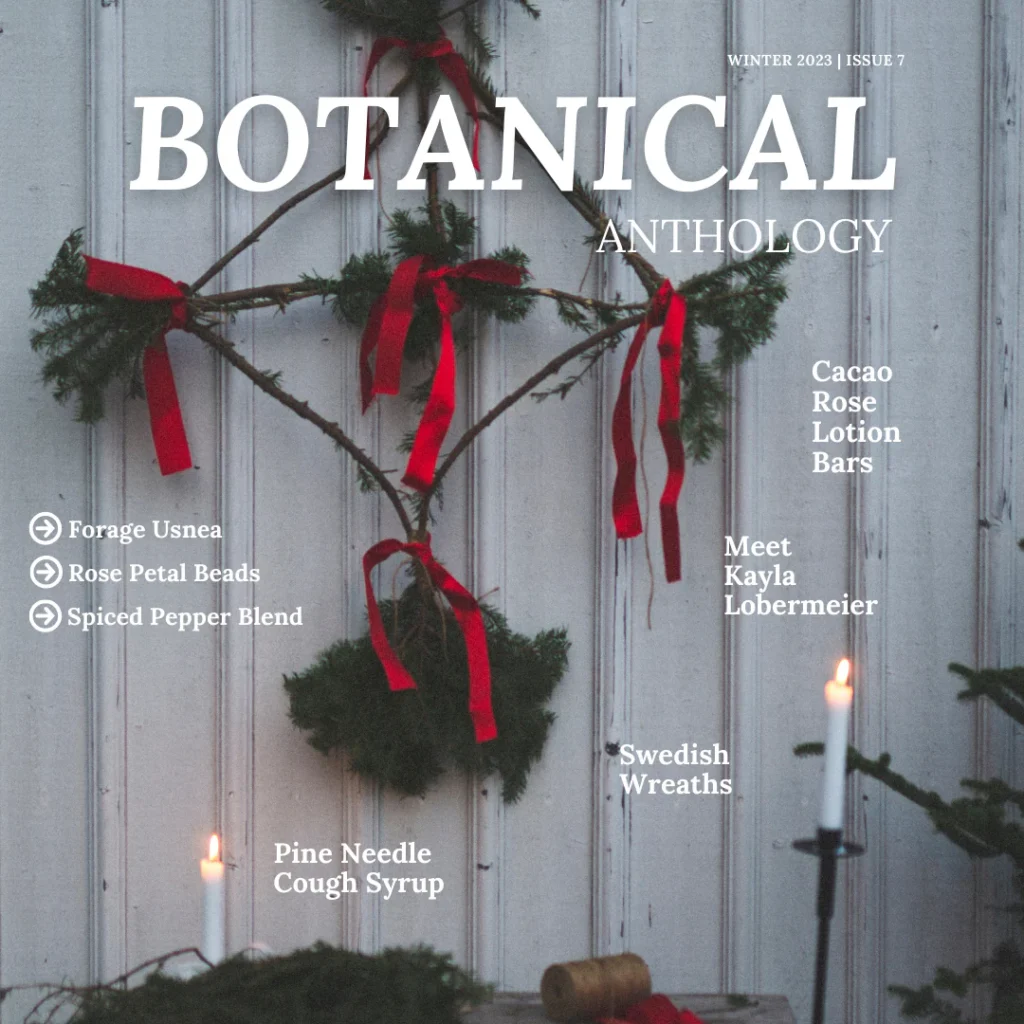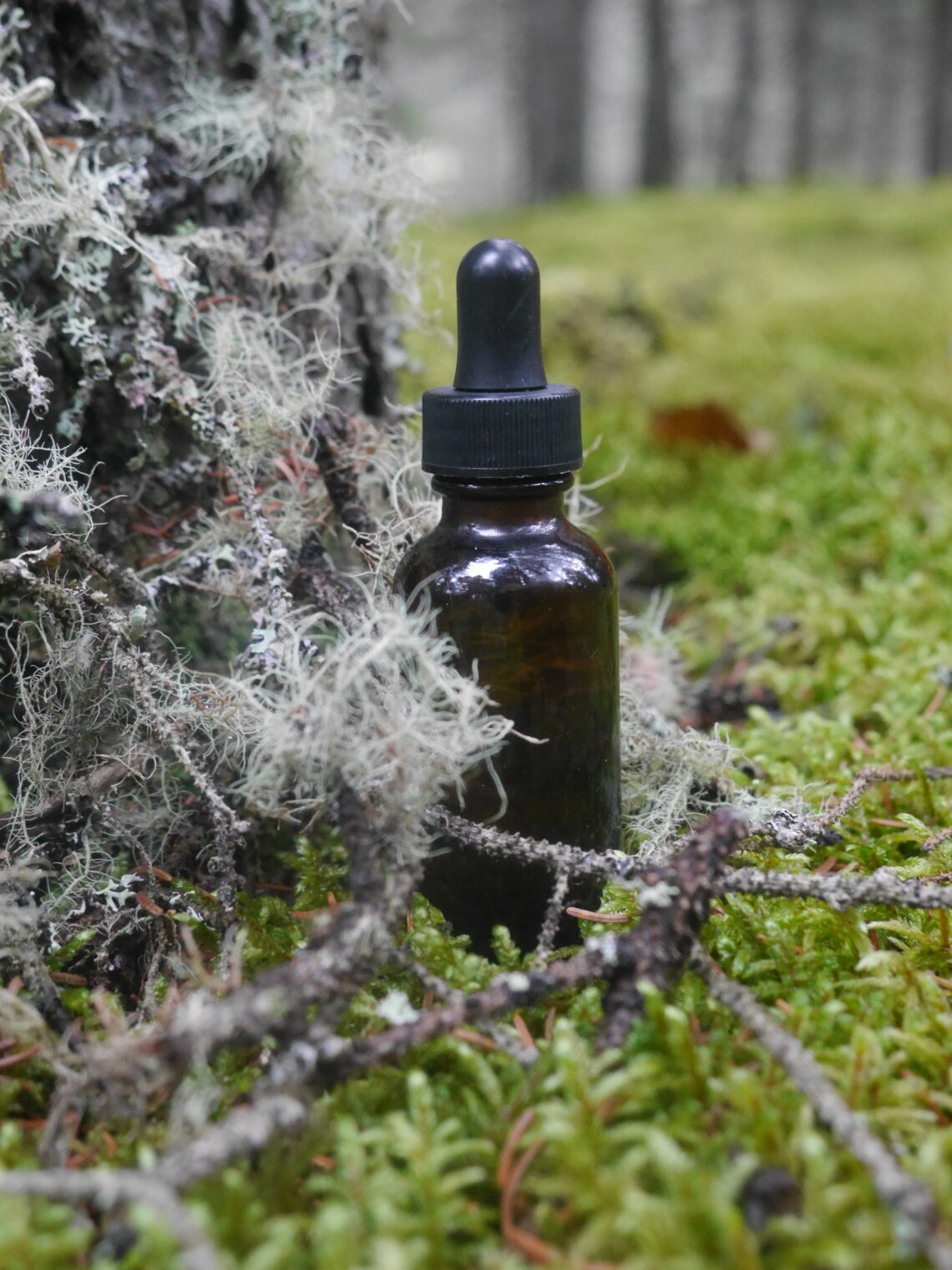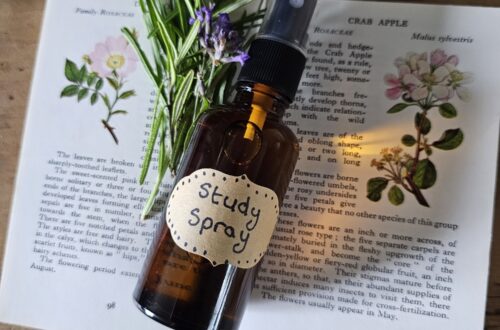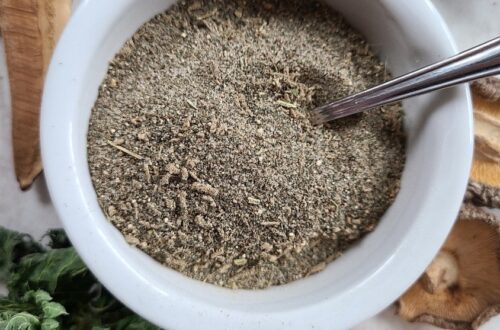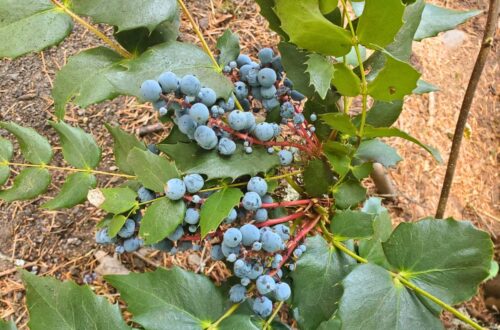This is an excerpt from the article “Enchanting Usnea” by Jillian Fenwick featured in the Winter Vol 2 | Issue 7 | 2023 edition of Botanical Anthology. To learn more about foraging, harvesting and using usnea check out our winter edition. This herbal magazine, featuring remedies and recipes with medicinal plants for budding herbalists, can be purchased as a digital version here and as a printed version here.
An usnea tincture blend with a focus on lung infection support is an excellent use of your foraged stash with the added benefits of marshmallow root and spilanthes. Marshmallow root contains mucilage polysaccharides which possess moisturizing and soothing properties that combat inflammation in the lungs and digestive tract. Spilanthes is an herb that has an immune-supporting effect and may be useful in the beginning stages of both viral and bacterial infections. Because usnea contains chemicals that are thought to stop germs from multiplying, having this tincture on hand during cold and flu season is a great line of defense for the home herbalist.
Material
- Usnea
- Marshmallow root
- Spilanthes
- 95% or higher alcohol, organic if possible
- Glass mason jar with lid
- Mesh strainer
- Amber glass bottle
Method
Fill half (50%) of the jar with usnea and the remaining half equally with spilanthes (25%) and marshmallow root (25%). Cover with a high-proof alcohol. Allow the tincture to infuse for six weeks or longer in a cool, dry and dark location. As mentioned, if you’re using a lower-proof alcohol, extend this time to four to six months*. After six weeks, strain your plant and lichen matter from your alcohol. Transfer the finished tincture into an amber glass dropper bottle to preserve freshness. Store in a cool place out of direct sunlight.
Notes
Vodka is the most common alcohol used in tinctures. For tincturing usnea, a 95% alcohol or higher is recommended, however, if you are unable to access such a high-proof alcohol, letting your tincture macerate for four to six months will garner similar results.
This tincture should not be used for daily, long term use. Avoid using this tincture for longer than six weeks in a row. Do not use it if you are pregnant, and consult your trusted health care resources before taking it if you are breastfeeding.
Jillian Fenwick is a mother, wife, gardener, whimsical airbnb stewardess and folk herbalist on the east coast of Canada. You can find her on Instagram @jillianclairefenwick and @meadowmeadcottages.
